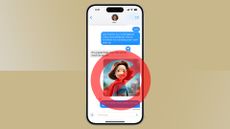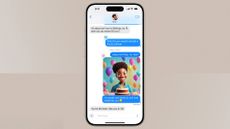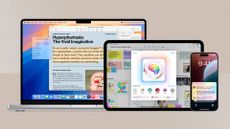Quick Summary
The iPhone 16 Pro and Pro Max are rumoured to have the thinnest bezels of any smartphone on the market, maximizing display space and visual impact.
These models might also boast brighter displays thanks to a new micro-lens array technology, potentially offering a significant improvement for HDR content.
The iPhone 16 is expected to be announced in September 2024, but we're already seeing some leaks that give us an idea of what to expect. The latest could bring a big advantage to the display for those looking to get the next-gen iPhone.
The iPhone 16 Pro models are reported to have a thinner bezel than any other smartphone to date. To put a number on it, the iPhone 16 Pro is said to have a 1.2mm bezel, while the iPhone 16 Pro Max is said to be 1.15mm. These details come from Ice Universe who has a good track record with leaking details about future devices.
For reference, the bezel on the iPhone 15 Pro was 1.71mm and on the iPhone 15 Pro Max it was 1.55mm, with this reduction in bezel reducing the black space around the edge of the display. It's said that Apple is going to use a "border reduction structure", according to 91mobiles, where the display's circuits and wiring bend around the side.
The aim will be to give you as much usable display space as possible and while touching right towards the edge doesn't really matter, it's the increased visual impact that Apple will be after. With more of the display illuminated, it will just look better.
Display changes for the iPhone 16 Pro
But the reduction of the bezel isn't all we're expecting. We've heard quite a bit about how the iPhone 16 Pro and 16 Pro Max displays may change. Firstly, they're thought to be larger, expanding to 6.3 and 6.9-inches respectively. That will lead to a larger phone, but you'll have a bigger display too.
But that's not all. It's also said that these displays are going to be brighter. The iPhone 15 Pro models have a peak brightness of 1,600 nits (HDR) or 2,000 nits (outdoors). That lags behind some more recent devices: the Samsung Galaxy S24 Ultra can reach over 2,500 nits, while the OnePlus 12 offers a 4,500 nit peak brightness.
Boosting the brightness is not only good for external visibility, but having used the Pixel 8 Pro extensively (with a 2,400 nit peak brightness), I've found that the biggest impact is on HDR content. As manufacturers look for more ways to embrace HDR, having a display that delivers it becomes more important.
It might be that Apple turns to a TV tech to make this possible, using MLA – micro-lens array. This tech puts billions of lenses into a display to reduce reflection and boost brightness. We've seen it in the likes of the LG OLED G4 and the Panasonic Z95A and those TVs look great - will the LG panel that Apple is expected to use in the iPhone 16 deliver the same?
We're still some way from the launch of the new iPhone models, but they could look absolutely stunning.











